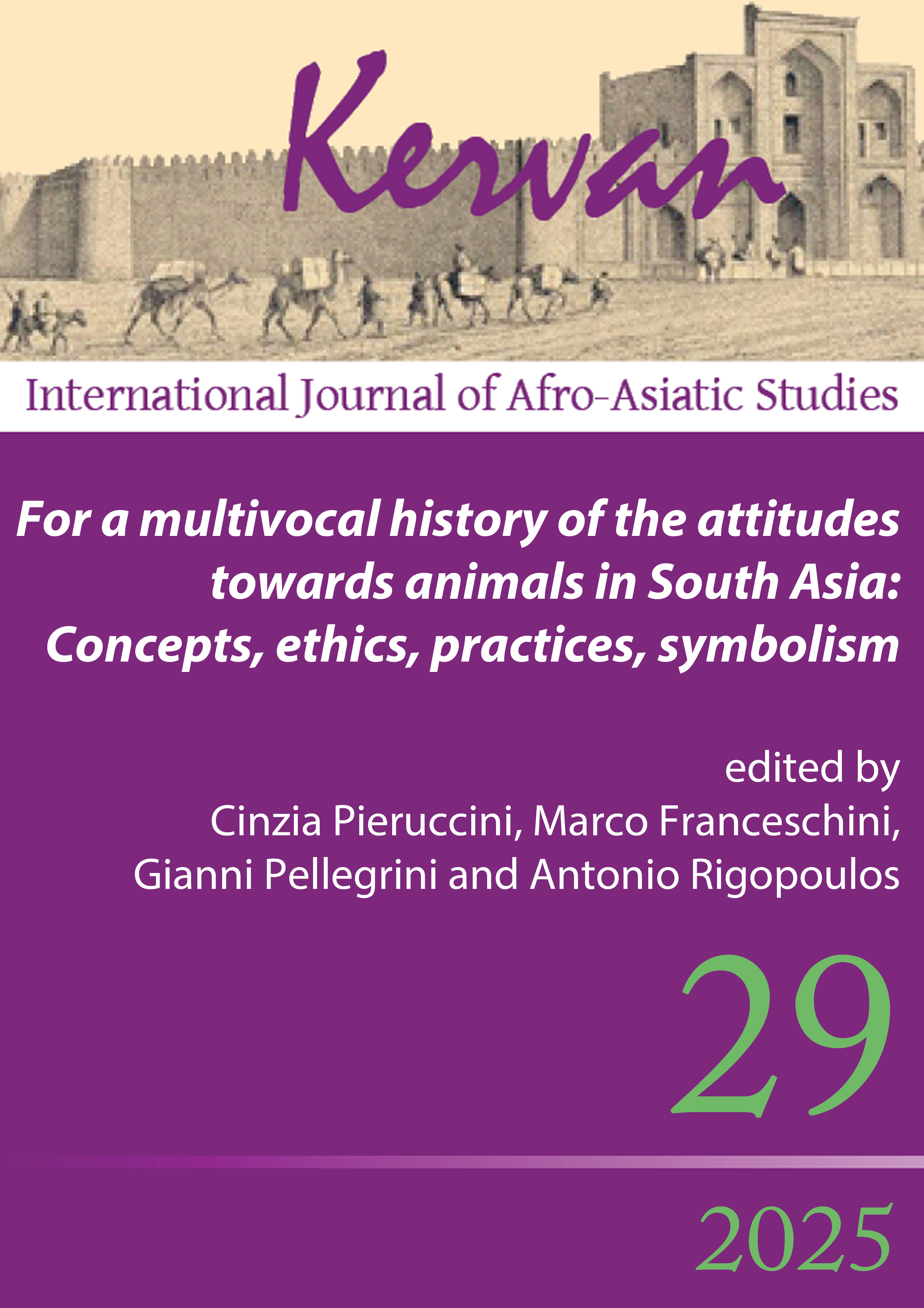Jaina attitudes towards animals: Ahiṃsā, lāñchana symbols and zoomorphic sculptures
DOI:
https://doi.org/10.13135/1825-263X/12117Abstract
In this article, I examine attitudes towards animals in a Jaina religious context in India. The Jainas practice strict vegetarianism and with their core concept of ahiṃsā (not harming others), they go even further. They are not only meant to avoid doing violence to animals, but are also encouraged to actively care for them. As this is seen as a religious act, many of their temple complexes have birdhouses adjacent to shrines as well as shelters and animal hospitals close by.
- We also encounter animal depictions in the areas of art and architecture. In Jaina iconography, there are theriomorphic symbols associated with most of the twenty-four Jinas, the human but enlightened teachers and main objects of veneration in Jainism. As the fully-liberated Jinas all look the same, individual identifying symbols (lāñchanas) were introduced during the Gupta period. In addition to the Jinas, there are also Jaina gods and goddesses. Many of these, too, ride on beasts or even have part-zoomorphic forms themselves.
- A number of animal depictions also recur in the architecture of the Jaina temple. We typically find lion thrones (siṁhāsanas), which are either heavy stone-built altars¾or in a Jaina context also lighter metal stands¾on which statues are placed for veneration. The employment of the mythical and usually hybrid sea animal of the makara, for instance, is widespread in the design of arches (makaratoraṇas) decorating the inside and outside of temple structures. Similarly composite creatures, known as yāḷis, adorn the balustrades flanking temple structures. Makara or cow depictions also adorn water spouts found in Jaina sacred contexts. In addition, elephant depictions recur in the iconography of the goddess Lakṣmī (Gajalakṣmī) and prominent elephant sculptures are connected with the entrance gateways and porches of Jaina temple edifices and larger complexes.
This shows that Jainas regard animals with great respect and invest many of them with particular sacred meanings. This gives them a prominent place in their philosophy as well as in the context of figural representations and temple settings.
Downloads
Downloads
Published
Issue
Section
License
Gli autori che pubblicano su Kervan accettano le seguenti condizioni:
- Gli autori mantengono i diritti sulla loro opera e cedono alla rivista il diritto di prima pubblicazione dell'opera, contemporaneamente licenziata sotto una Licenza Creative Commons - Attribuzione che permette ad altri di condividere l'opera indicando la paternità intellettuale e la prima pubblicazione su questa rivista.
- Gli autori possono aderire ad altri accordi di licenza non esclusiva per la distribuzione della versione dell'opera pubblicata (es. depositarla in un archivio istituzionale o pubblicarla in una monografia), a patto di indicare che la prima pubblicazione è avvenuta su questa rivista.


 The articles that have appeared on Kervan since 2016 are rated as Class A in the system of National Scientific Qualification (ASN, disciplines 10/N1 and 10/N3).
The articles that have appeared on Kervan since 2016 are rated as Class A in the system of National Scientific Qualification (ASN, disciplines 10/N1 and 10/N3). The journal has been approved for inclusion in DOAJ. The DOAJ listing of the journal is available at
The journal has been approved for inclusion in DOAJ. The DOAJ listing of the journal is available at  The journal has been approved for inclusion in ERIH PLUS. The ERIH PLUS listing of the journal is available at
The journal has been approved for inclusion in ERIH PLUS. The ERIH PLUS listing of the journal is available at  Kervan was just accepted for indexing in SCOPUS. This important milestone ensures that articles published in Kervan are easily found when searching for library, archives and Information science and it enables Kervan authors to keep track of how often their article has been cited by others.
Kervan was just accepted for indexing in SCOPUS. This important milestone ensures that articles published in Kervan are easily found when searching for library, archives and Information science and it enables Kervan authors to keep track of how often their article has been cited by others.
